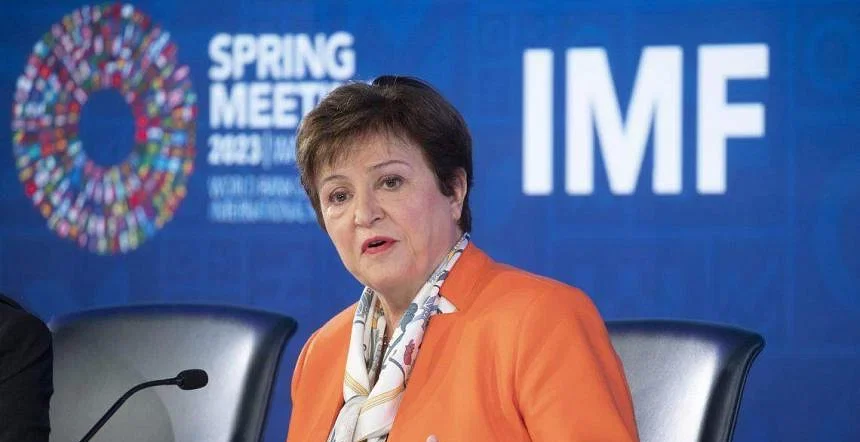Following pledges of over $57 billion from international financial institutions (IFIs) and other partners to aid Egypt amid the severe economic implications of escalated tensions during the Gaza war, effective management is crucial to ensure these finances sustain foreign exchange flows and address the country’s high level of debt, experts say.
Bailout finances
In February, Egypt signed a development deal for the Ras El-Hikma coastal zone, securing $24 billion in cash flow, with an additional $11 billion of UAE deposits at the Central Bank of Egypt (CBE) directed towards project investments.
The International Monetary Fund (IMF) also increased its Extended Fund Facility (EFF) loan program for Egypt from $3 billion to $8 billion, unlocking $1.3 billion per tranche (with five tranches remaining) from the end of 2024 through 2026.
Furthermore, the World Bank committed $6 billion to support the government budget and private sector over three years, the European Union announced a finance package worth $8 billion over three years, and the UK pledged $400 million for the country.
Taming debt
Egypt’s debt reached 96% of its Gross Domestic Product (GDP) in the FY2022/2023, ending on June 30, 2023. According to Ministry of Finance data, the government aims to decrease it to 92% in the current FY2023/2024, ending on June 30, 2024, and further to below 83% in the upcoming FY2024/2025.
These figures underscore the significant challenge of debt management facing the Egyptian government, with long-term implications. The government plans to allocate a portion of the received finances to primarily reduce the debt ceiling, a crucial aspect of the IMF’s EFF loan agreement.
Under this agreement, Egypt is committed to lowering the debt-to-GDP ratio to below 80% by 2027. Meanwhile, a recent IMF staff report reveals that $15 billion in assets have been transferred from the New Urban Communities Authority (NUCA) to the Central Bank of Egypt (CBE) and incorporated into international reserves. Additionally, $6 billion will be transferred from NUCA to the banking system to facilitate the settlement of arrears, with the Ministry of Finance receiving the equivalent of $12 billion in local currency from the transaction to reduce debt by the same amount.
In 2024, Egypt faces a significant repayment obligation of $29.23 billion in external debt service, with $14.59 billion due in the first half (H1) of the year and $14.63 billion in the second half (H2), according to data from the Central Bank of Egypt (CBE).
Egypt vs Pakistan debt
Reflecting on this, Ziad Daoud, Chief Emerging Market Economist at Bloomberg, drew parallels to Pakistan’s situation, suggesting that new loans may be acquired to repay existing ones following the IMF’s approval to increase the value of the loan program for Egypt.
Comparing Egypt and Pakistan in terms of debt borrowing reveals significant differences in their economic landscapes and relationships with international financial institutions (IFIs), according to Ali Metwally, an economic consultant at IBIS Consultancy, speaking to Business Monthly.
Egypt, with its larger and more diversified economy, has historically maintained closer ties with IFIs than Pakistan. This likely translates into more favorable borrowing terms for Egypt. Moreover, Egypt’s proactive pursuit of structural reforms and economic diversification strategies may have enhanced its credibility among lenders, further facilitating access to financing on advantageous terms.
In contrast, Pakistan faces challenges stemming from its smaller, less diversified economy and periodic instability and political uncertainties. Despite engaging with IFIs and initiating some economic reforms, progress may have been constrained by institutional limitations and geopolitical factors. This makes affordable financing and effective debt management more challenging for Pakistan.
Metwally suggests that Egypt can effectively manage the finances committed by IFIs by prioritizing transparent and accountable utilization of funds. This entails implementing projects and reforms that boost economic productivity, foster inclusive growth, and enhance the country’s resilience to external shocks. He emphasizes the importance of efficiently allocating IFI funds to projects that contribute to long-term sustainable development and poverty reduction. Additionally, Egypt should uphold sound governance practices and closely monitor outcomes to maximize the impact of financial support from IFIs.
Clear roadmap
Former Economist at JP Morgan and former PM, Mohamed Fouad, shared insights with Business Monthly regarding the latest IMF report on Egypt’s EFF loan, characterizing it as a roadmap for improving the country’s economic situation. He summarized the report into three main axes: monetary policy, fiscal policy, and competitiveness.
In terms of monetary policy, the IMF emphasized the importance of maintaining a free exchange rate, highlighting it as a key challenge for the program’s success. It also called for transparency regarding any CBE interventions in the exchange rate and urged the cessation of direct lending to state institutions or through government banks.
On the fiscal front, the report advocated for increased government spending and emphasized the need for greater transparency, including the publication of liabilities related to government-affiliated bodies and companies. It also recommended gradually transitioning from in-kind subsidies to expanding conditional cash support.
Regarding competitiveness, the report underscored the significance of reducing state involvement and supporting the investment climate through various policies. This includes the government’s commitment to publishing procurement contracts exceeding 20 million pounds and disclosing exemptions and benefits for state-owned companies.
Fouad concluded with a mixed sense of optimism and regret, questioning the lack of action despite the clear warnings and directives outlined in the report. He expressed a poignant sentiment encapsulated in the proverb: “Just as the cure is near, the relapse is at the same distance.”







